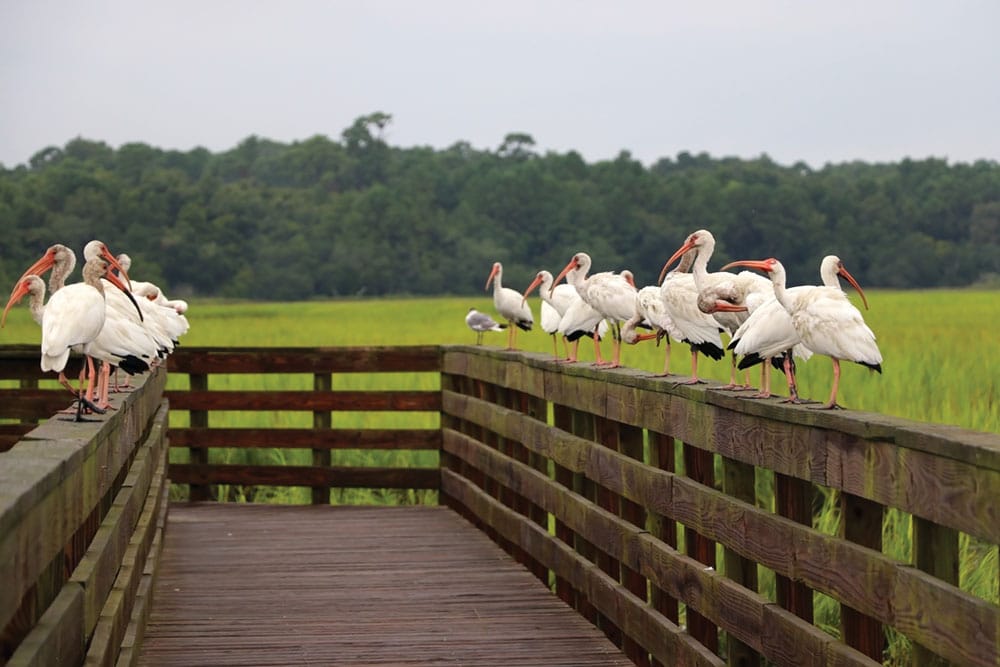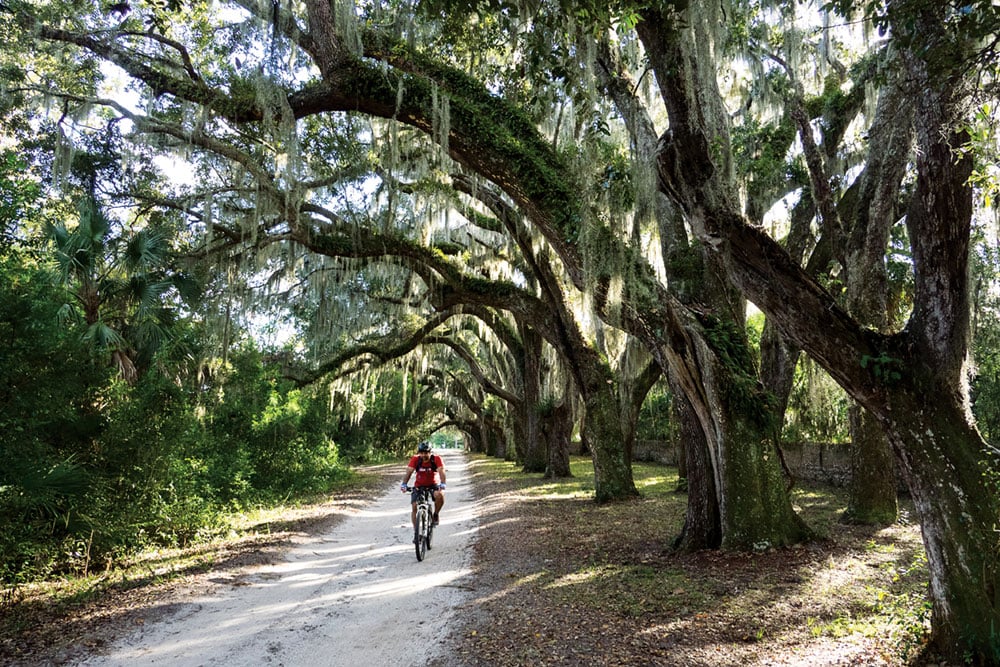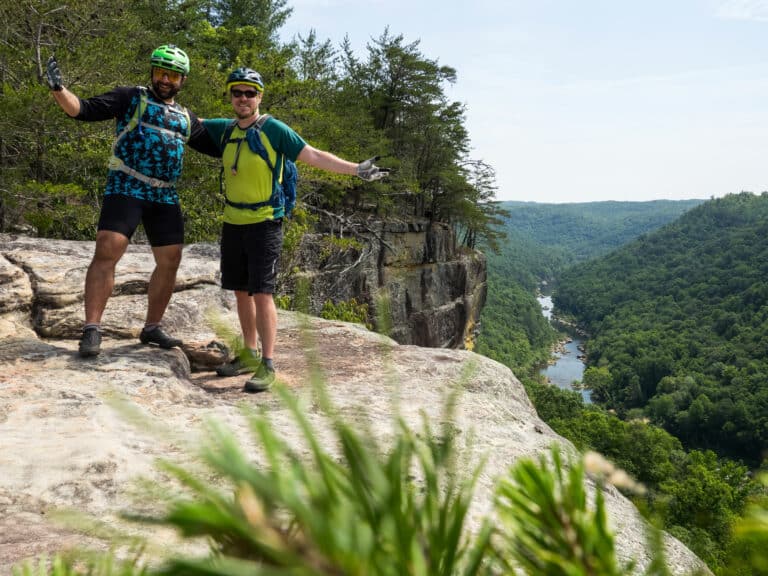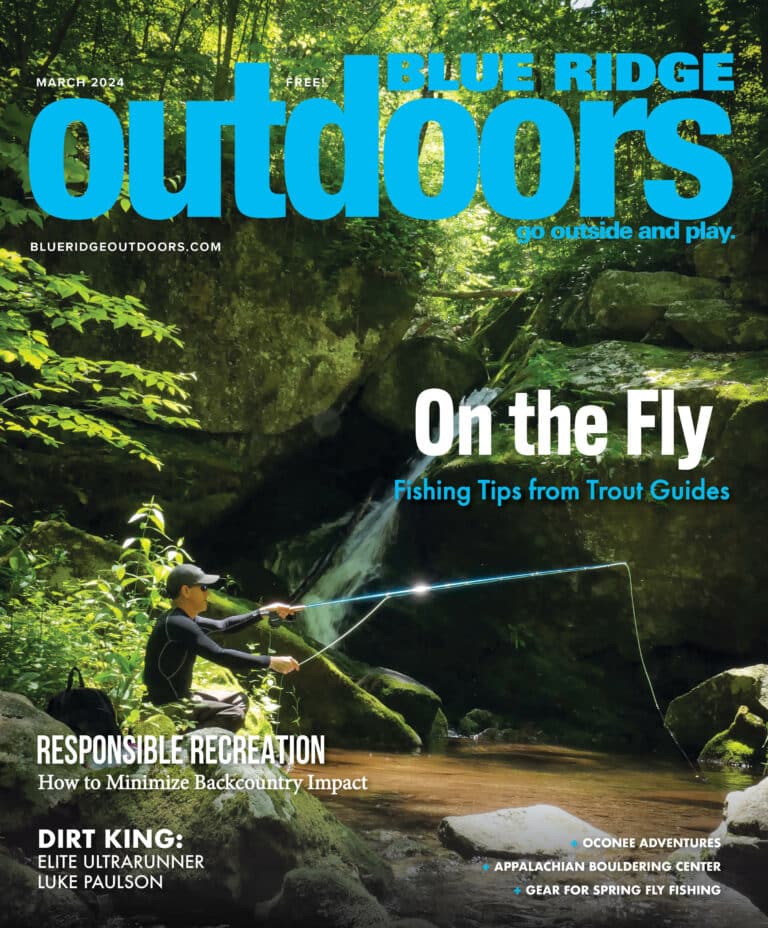Come Down from the Mountains for These Coastal Adventures on Water and Land
Just figuring out the whole “where is Low Country?” thing can be an adventure. Most define it as starting south of Myrtle Beach, continuing along coastal South Carolina, and ending somewhere—possibly down in Georgia. But exactly how far north and south to draw any unofficial borders depends on who you ask.
Regardless, if you’re looking for a warm winter escape with surprising outdoor potential for paddling, biking, and hiking, then give these overlooked adventures a chance. Sure, they may be located in one of the flattest parts of the U.S., but this scenic region includes dense longleaf pine forests, bald cypress wetlands, blackwater rivers, pristine beaches, pleasant campgrounds, and tidal channels winding through cordgrass.

Myrtle Beach Area, South Carolina
Begin by looking past Myrtle Beach’s high-rise hotels and sprawling housing developments. Paddlers will want to check out the remarkable blackwater Waccamaw River—specifically parts of the 140-mile Blue Trail, designated in 2009 by American Rivers. One option is the headwaters at Lake Waccamaw, the largest of the inland Carolina bays in the Southeast. The easier option is to paddle on the lake, while the more adventurous can explore the wild upper river below Lake Waccamaw State Park.
There are dozens of access points along the winding river, which is lined by bald cypresses draped with Spanish moss and home to countless birds and other wildlife. Popular options on the lower river include paddling up the Blue Trail from the quaint riverside town of Conway. Downstream, you can explore the Waccamaw National Wildlife Refuge. Or paddle to bridge-less Sandy Island, home to a Gullah community and a preserve and nature trail managed by the Nature Conservancy.
Nearby land activities include the seven-mile Hulk Trail at the Horry County Bike and Run Park. The Myrtle Beach Area Mountain Bike Association maintains an awesome series of stacked single-track loops built into 72 acres of forested dunes created during the construction of the Intracoastal Waterway (ICW).
Worth checking out is picturesque Huntington Beach State Park. Wildlife watchers will find wetlands filled with alligators, egrets, and 300 other bird species. Walkers will find short trails and 3 miles of undeveloped beach, which are also enjoyed by sunbathers, swimmers, and surf anglers. Plus, the Moorish-style Atalaya Castle can be explored. Just across Highway 17 is Brookgreen Gardens, a private botanical preserve and sculpture park.
Francis Marion National Forest, South Carolina
Some of the best parts of Low Country to explore are the little-developed and semi-wilderness regions in and around Francis Marion National Forest. Paddlers should start with the tidal Awendaw Creek Canoe Trail. This scenic water trail totals seven miles, three miles above Awendaw Creek Canoe Launch and four miles below. The recommended lower section ends at Buck Hall Recreation Area on the ICW, where dolphins can often be spotted.
For an even more remote paddling option, check out the Wambaw Creek Wilderness Canoe Trail, deep inside the national forest where alligators far outnumber paddlers. For a bigger experience, the Chicken Creek Canoe Trail takes paddlers out onto the lower Santee River.
Hikers and mountain bikers can check out two Low Country sections of the cross-state Palmetto Trail. The Awendaw Passage is seven miles long and often greasy in spots despite much of the eastern half being on a bluff above Awendaw Creek. The Swamp Fox Passage runs 48 miles through the heart of the national forest. The northwestern half of the trail can be muddy or flooded, but the 13 miles between Highway 17 and Steed Creek Road is mostly on an elevated logging trace that’s typically drier.
Next, consider a short and fascinating walk on the I’on Swamp Interpretive Trail. Or take the ferry to Bulls Island in Cape Romain National Wildlife Refuge, where you can bike and hike sandy roads past wetlands filled with alligators to an ominous boneyard beach.
Nearby, history buffs and walkers can visit Battery Warren, an earthen Civil War fort, and Hampton Plantation State Historic Site—paddlers (with solid navigation skills) can even arrive by boat via Hampton Creek.
Georgia’s Southern Sea Islands
By far the crown jewel of Georgia’s southern barrier islands, Cumberland Island National Seashore is a must-visit for outdoor adventurers. There you’ll discover a mix of semi-wilderness salt-pruned oak woodland, and preserved slavery-era plantations and settlements.
Take the ferry (reservations recommended) from the colonial town of St. Mary’s for a long day trip or better yet make it a few nights. Bike (bring your own or rent) the island’s main road. Hike trails into the island interior. Pitch a tent (reservations required) at Sea Camp or backpack to wilderness camps like Brickhill Bluff and Hickory Hill. Tour the Dungeness Ruins and historic Plum Orchard mansion. And for adventurous paddlers who are comfortable with changing winds and tides, consider paddling to the island—about 7 miles from the most common launch at Crooked River State Park.
If you’re looking for a bit more of a developed experience, there are two ideal options nearby. Just north is the moderately developed Jekyll Island. Owned by the state of Georgia, there are options to paddle on tidal channels, walk trails, and cycle the island’s perimeter pathway.
Just over the border on Florida’s Amelia Island is Fort Clinch State Park, with a historic fort to explore, a beach to hunt for shark’s teeth, and a mountain bike trail.
Cover photo: A biker rides a trail through the Cumberland Island National Seashore. photo by Mike Bezemek








